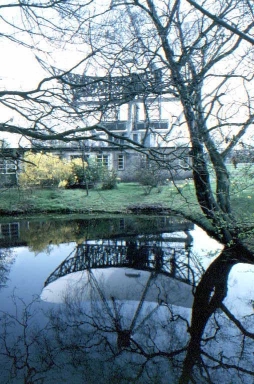The 250-foot dish of the Mk I, later Mk Ia, now Lovell Telescope at Jodrell Bank was an icon not only of radio astronomy, but of the early Space Age. Sir Bernard Lovell's books Out of the Zenith and Astronomer By Chance set forth in his inimitable style, much of the early scientific and political history of Jodrell Bank. This picture shows its "new" surface dating from 1971, applied over the original mesh reflector. The Lovell telescope is now used not only individually, but as the large-aperture anchor of the MERLIN interferometer array spanning most of England. This reined as the largest fully-steerable radio telescope from its inauguration in the summer of 1957 (hmm, that makes it several months older than I am) until the completion of the 100-meter Effelsberg dish in 1972. The Lovell telescope has been particularly important in studies of pulsars and interstellar masers, where its substantial collecting area makes it especially valuable, as well as its role in very-long baseline work, with the remote MERLIN dishes as far away as Cambridge. There is now a live webcam showing the Lovell telescope.
Another interesting instrument developed at Jodrell Bank is the Mk II telescope, which uses an elliptical dish (25x28 meters) to increase surface area (and resolution in one direction) while minimizing wind loading and structural height. Following an upgrade to improve the surface accuracy, it is now part of the MERLIN interferometry network. Here the Mk II is seen reflected in a nearby pool.

Last changes: 03/2001 © 1999-2001